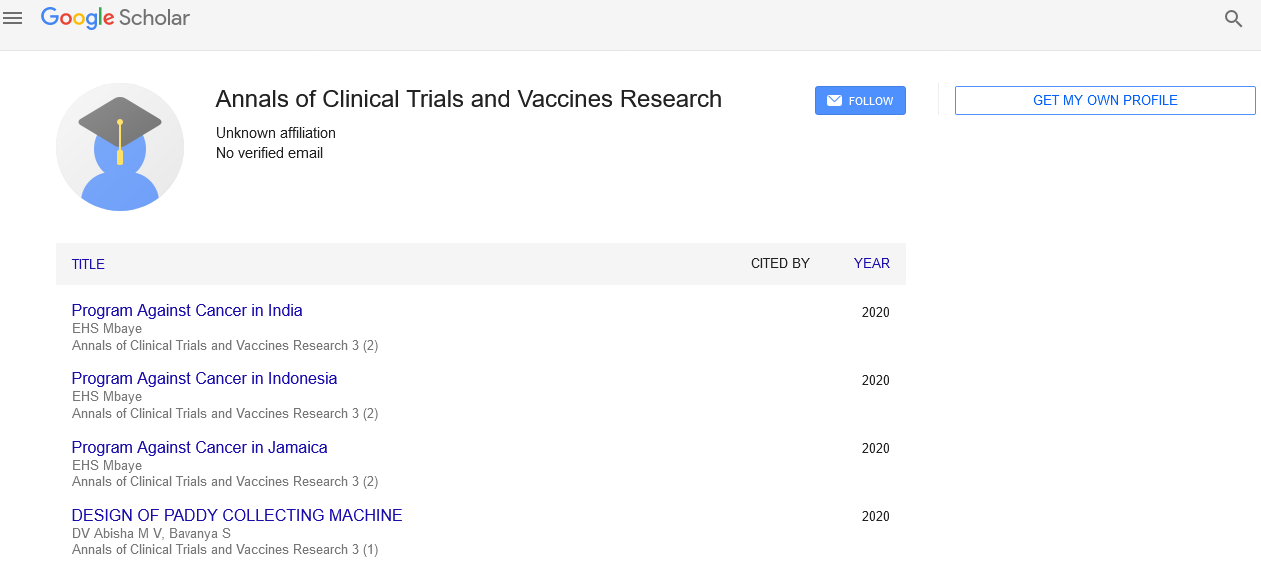Short Article - Annals of Clinical Trials and Vaccines Research (2020) Volume 3, Issue 3
Long-term surveillance of Enterovirus Infection on some territories of Russia
Natalia Romanenkova1, Liudmila Golitsyna2 , Nadezhda Rozaeva1, Olga Kanaeva1, Maina Bichurina1 and Nadezhda Novikova2
Saint Petersburg Pasteur Institute, Russia¹
Nizhny Novgorod Blokhina Institute of Epidemiology and Microbiology, Russia²
Abstract
In the Framework of the Global Polio Eradication the supplementary surveillance of enterovirus infection has become more important during the last phases of Polio Eradication Initiative. From 2006 till 2019 on 14 administrative territories of the Russian Federation more than 35000 samples from the patients with enterovirus infection were investigated under the leadership of WHO Subnational Polio Laboratory in SaintPetersburg. The percentage of poliovirus isolation from such patients was rather stable - from 0, 1% till 0, 4%. We confirmed that all detected polioviruses isolated from recently vaccinated children were classified as vaccine strains according to intratypic differentiation. The percentage of revealed non polio enteroviruses in the course of enterovirus surveillance fluctuated between 8, 5% and 24, 3%.
The epidemic process and the clinical picture of enterovirus infection on different territories had some peculiarities. On some territories the enterovirus meningitis was the predominant form of infection, on other territories the enterovirus infection with exanthema prevailed. In Saint-Petersburg, Archangel and Saratov regions the percentage of the enterovirus infection cases with the clinical picture of enterovirus meningitis was significantly higher than the percentage of the enterovirus infection with exanthema. In the Komi Republic, Leningrad and Murmansk regions the percentage of enterovirus infection with exanthema was statistically higher than the enterovirus meningitis portion. The epidemic peaks of enterovirus infection with the prevalence of different clinical forms of infection depend on different etiological agents.
In 2007-2008 we frequently isolated from the patients with the enterovirus infection Echovirus 6 and Echovirus 30 on many territories of North-West of Russia where enterovirus meningitis was the leading form of infection. In this period Echovirus 30 of genotype Ec2 was the causative agent of meningitis outbreaks. In 2013 the outbreaks of meningitis in the NorthWest of Russia were also caused by Echovirus 30. With the help of molecular studies we revealed that Echovirus 30 lineage which largely circulated in Russia in 2013 belonged to the new genotype H. Phylogenetic analysis has shown that the strains of Echoviruses 30 isolated in Russia were closely related to the strains of this genotype detected in China in 2010-2013. Since Echoviruses 30 previously isolated in Russia belonged to the genotype Ec2 which had circulated in Europe earlier, it is thus likely that the genotype H which had not been detected in the country earlier was imported into Russia from South-East Asia. In 2016 Echovirus 30 of different variants of genotype H was implicated in the epidemic peaks of enterovirus meningitis in Kostroma and Saratov regions where 77% of cases of enterovirus infection were represented by meningitis.
A year later in Saratov region 65% of cases of enterovirus infection had the clinical picture of enterovirus meningitis. The etiological agent of the disease was Echovirus 18 which provoked a huge peak of enterovirus meningitis for the first time since 2006. The strains of Echovirus 18 which circulated in Russia were distributed to three clusters. The strains which caused the enterovirus meningitis in Saratov region belonged to cluster 3; these strains were formed separately from other strains of this enterovirus type and differed from Echoviruses 18 occasionally circulating in the North-West of Russia.
Outbreaks and grouped cases of viral exanthema of the mouth and extremities (hand, foot and mouth disease) were registered in the NorthWest of Russia in 2011-2012. Coxsackievirus A16 - the etiological agent of this enterovirus disease which had not previously been detected in the North-West region was isolated from the samples of the patients with hand, foot and mouth disease. Molecular analysis has shown that Coxsackieviruses A16 was represented by two genetic variants which were closely related to the strains isolated in France in 2010 and in Japan in 2011. Thus we supposed that Coxsackieviruses A16 implicated in the outbreaks had been brought to the North-West of Russia by two importation events.
In 2016 another type of enterovirus - Coxsackievirus A6 was the etiological factor of hand, foot and mouth disease in Murmansk and Leningrad regions. In Murmansk region and in the Komi Republic where in 2017 the enterovirus infection with exanthema reached 95% and 60% correspondingly, the cases were also connected mainly with Coxsackievirus A6. The strains of Coxsackieviruses A6 identified in the North-West of Russia belonged to three sub-genotypes 5, 6 and 8 of the pandemic genotype of CoxsackievirusesA6. The majority of identified strains belonged to sub-genotypes 6 and 8 which in 2017 dominated in the structure of Coxsackieviruses A6 in the North-West of Russia and all over Russia.
In 2018-2019 the significant outbreaks of the enterovirus infection were not registered. In the course of surveillance the enteroviruses of 30 different types belonging to species A and B of enteroviruses were detected in the samples of patients suffering from enterovirus infection.
We determined the etiology of sporadic and epidemic cases of enterovirus infection represented by different clinical forms. On some territories the local epidemic foci of the enterovirus infection among children were revealed. The etiological agents of the local outbreaks of the enterovirus meningitis in Saint-Petersburg, Murmansk and Saratov regions were Coxsackievirus B5, Coxsackievirus B4 and Echovirus 30. The epidemic foci of the enterovirus infection with exanthema in Archangel, Leningrad, Murmansk and Novgorod regions were caused by Coxsackieviruses A10, A16 and A6.
WHO Subnational Polio laboratory fulfils the supplementary surveillance of children from groups at risk investigating the samples from healthy children under five years who arrived in the North-West of Russia from polio unsafe territories, mostly from the countries of Central Asia. A number of these children were unvaccinated against poliomyelitis. From 2006 till 2019 more than 1500 children were examined, the percentage of isolated polioviruses fluctuated between 1, 7% and 10, 1%, including four wild polioviruses of type 1 isolated in 2010 from Tajik children. In the course of 14-years surveillance there were only three years when all the samples from children from migrants’ families were free from polioviruses. The percentage of revealed non polio enteroviruses in the course of surveillance of groups at risk was from 7, 8% and 12, 9%.
The spectrum of types of enteroviruses isolated from children who are permanent residents of the North-West of Russia (Coxsackieviruses A4, A10, Coxsackieviruses B1-6 and Echoviruses 6, 11, 13 and 30) significantly differs from the spectrum of types of enteroviruses isolated from migrants’ children who arrived in the North-West of Russia from polio unsafe territories. Enteroviruses such as Coxsackieviruses A13, 17, 24, enterovirus 99 (all of them belonged to species C of enteroviruses), enterovirus 75 and 120, which had not circulated earlier in the North-West of Russia, were isolated from children from migrants’ families who arrived from polio unsafe territories. In 2010 Coxsackievirus A13 was isolated from a healthy Tajik child infected by the wild poliovirus of type 1 which had been the causative agent of the outbreak of poliomyelitis in Tajikistan. Both viruses, the wild type 1 poliovirus and Coxsackievirus A13 belonging to species C of enteroviruses persisted simultaneously in the child’s organism and were imported to the North-West of Russia from the countries of Central Asia.
The phylogenic analysis showed that regularly detected in the North-West of Russia serotypes of enteroviruses such as Coxsackieviruses B1-6 which were isolated from migrants’ children differed from viruses of the same type which circulated in our region. The comparison of the nucleotide sequences of Coxsackieviruses A13 and Coxsackieviruses A17 which were isolated from the children from Tajikistan with the known nucleotide sequences represented in the Data base of the International GenBank revealed the great difference between them. The obtained results showed the necessity of obligatory examination of the children from groups at risk.
Foot Note: This work is partly presented at Joint Event on 24th World Congress on Pharmacology & 7th World Heart Congress, August 19- 20, 2019 at Vienna, Austri
Our study proved the importance of supplementary surveillance of enterovirus infection and of the children from groups at risk aimed at acquiring new information about the circulation of enteroviruses among various groups of population on different territories in different years. The monitoring of the circulation of polioviruses and non polio enteroviruses is necessary to maintain the polio free status of the Russian Federation by means of high quality laboratory control using virological and molecular methods. The determination of the peculiarities of the epidemic process of enterovirus infection is indispensable to prevent the spread of this infection and to limit the circulation of enteroviruses including the imported new serotypes and genotypes of non polio enteroviruses.

